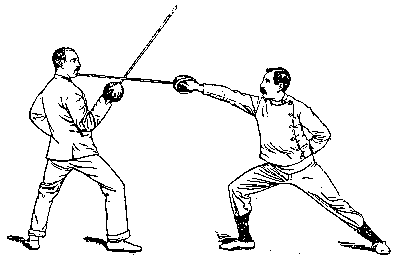THE PHOENIX SOCIETY FOR HISTORICAL SWORDSMANSHIP


SYSTEMS OF STUDY
MAIN AREAS OF PRACTICE

ITALIAN LONGSWORD (Monday)
Fiore de Liberi's 'Flower of Battle' was a combat manual that covered wrestling, dagger combat, sword in one hand, sword in two hand, spear, pole-axe, mounted combat and more. Fiore's work was useable in and out of armor- making his manual a complete study of Western Martial arts. Fiore's work was published in 1410 for a powerful miltary leader by the name of D'Este and has four versions, the most popular being the Getty. His works were later expanded upon by Phillip Vadi in 1450 and later Italian masters were influenced by him in the use of the larger two-handed swords. We focus on the sword in two hands and some use of the pole-axe following the plates of Fiore.

ITALIAN RAPIER (Thursday)
From the late 1500's through the 1600's the rapier was a popular, thrust centric, civilian weapon, used for personal defense and duels. Multiple Italian masters developed a series of manuals on the use of the rapier alone, and in conjunction with a variety of sidearms in the left hand (dagger, shield, cape, 2nd rapier, etc).
At the Phoenix Society, we focus on the work of Nicoletto Giganti who wrote 'The School' in 1606. Giganti's methodology is designed for students learning from the ground up and is written in an easy to understand style. For advanced work we focus on Salvator Fabris' epic 1606 manual, 'The Science of Arms', something Giganti may have plagarized and simplified- making the pair a wonderful match to study.
MILITRAY SABER (Friday)
The saber is a curved, usually cut centric weapon and its usage spans across many nations and cultures through out human history. Its was popular across nearly all of Europe's armies and navies throughout the 18th and 19th centuries, utilized on foot, horseback, and boarding actions. While its usage on the battlefield waned, its usage as a dueling and sporting weapon continued on with it being one of the three modern fencing weapons still practiced today.
At the Phoenix Society, we primarily practice sabre as described in the Radaellian tradition, a widely influential fencing system devised by and for the Italian cavalry in the mid 1800s and prized for its powerful cuts and utility in and out of the saddle, on and off the battle field.

SECONDARY AREAS OF PRACTICE

SMALL SWORD
During the late 1600's the lengths of rapiers made them prohibitive to wear. Rules at the French court altered what was acceptable and the small sword was created, setting a trend for all of Europe. These blades, like a rapier, were designed for thrusting but often had no cutting edges and where significantly shorter than rapiers masking them easily worn at the side. They remained popular throuhgout the 1700's and can be seen on the hip of famous generals such as George Washington and Napoleon Bonaparte.
Modern and epee and foil can trace their roots back to the French smallsword, with the foil originally being a light and flexible practice sword for the smallsword, and the epee being a more accurate representation of the sharp, dueling sword

SINGLESTICK
Wooden rods of about thirty-five inches in length, equipped with rigid basket-guards which completely enclose the fencer's hand - were the 18th and 19th century descendants of Medieval wasters, wooden facsimile weapons popularly used for weapon training by national armies and navies, stage gladiators, and sportsmen alike.
During the Georgian and Victorian eras, Singlestick play was a widely popular sport throughout England, the British Commonwealth, and the U.S.A. until the early part of the 20th century with massive prize-fights and tournament competitions.

DUSSACK
The dussack is a simple, short cutting weapon of which there are not many surviving examples. As such, it is unknown if dusacks were common weapons of the 1500's, or if they were geared toward training purposes. Dussacks were made of wood, leather and metal and resemble a scythe blade, or a large knife. Joachim Meyer's manual 'Thorough Description of the Art of Fencing', was published in 1570, and covered not only the use of the dussack, but other weapons as well such as the longsword, dagger, and polearms.
German Longsword
The KDF arts of Liechtenauer are also taught at the Phoenix Society. KDF is a unique approach to the use of the longsword.
The art derives from the Zettel of Liechtenauer and the glosses (explanations) of various masters in the KDF fencing tradition.
